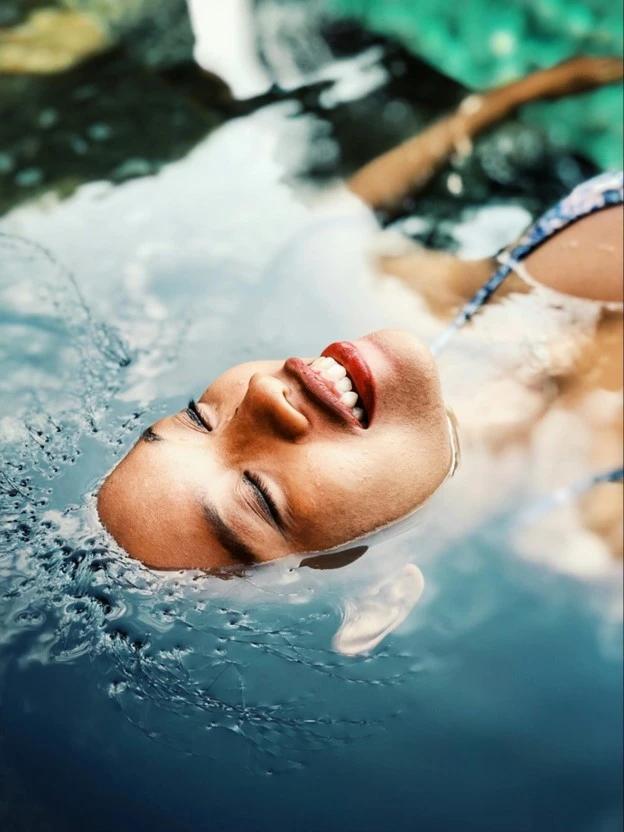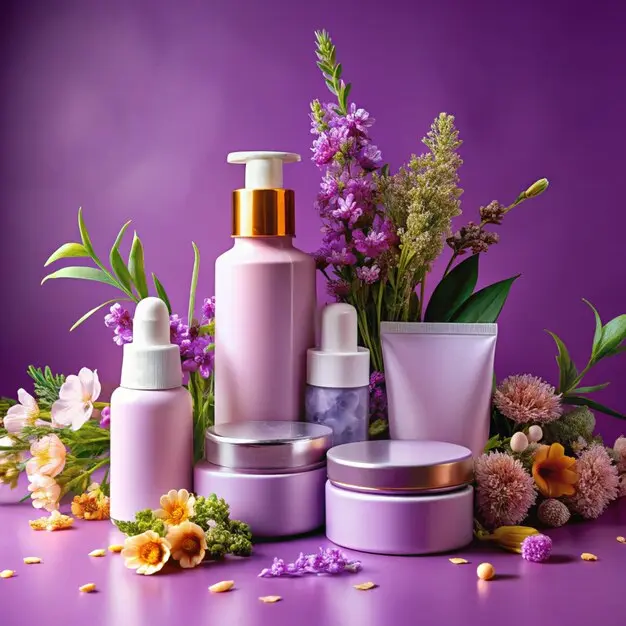With an ever-changing market of beauty and cosmetics, it is a tough call to make your brand noticeable. Everyone has to incorporate changes to avoid being left behind.
This is where marketing for cosmetics comes into play. It is the link that connects the brands with their customers so that their ideas are obtained and their products sold.
But what are the beauty marketing strategies that work best? How can brands utilize them for their competitive advantage?
Which marketing strategies for cosmetics companies are the best five that can be used by beauty and cosmetics brands as discussed in this article? We shall look at how these strategies can be of help to brands in the perfecting of the beauty industry trends.
Knowing who your target demographic is or how to use social media influencers are just a few of the manpower recommendations we will make. This is applicable whether you are a marketing expert or a brand manager working on a marketing plan for a cosmetics company or marketing beauty products.

Define Your Target Demographic
The first stage of any marketing for cosmetics campaign in any company is identifying the target demographic. When it comes to the beauty industry, age should be of high concern.
Each segment has its own needs and preferences when it comes to beauty. For example, a younger target audience would want loud and stylish things. The older audience may cater mainly to anti-aging and health-increasing products.
Appreciating such insight would help you adapt your messages and products more efficiently. It would also shape your thinking on which marketing strategies for cosmetics companies to employ.
For instance, say the goal is to market the product towards the young; platforms like Instagram and TikTok can do the job. Whereas, the older cohort may respond well to traditional advertising, and email marketing.
There are some aspects worth thinking through within your marketing plan for cosmetics company:
- Age group: Every age group has different beauty needs and preferences topically.
- Gender: A large portion of cosmetics is directed towards women; however, there are many products that cater to men as well.
- Lifestyle: Beauty preferences of a consumer can depend on the way he or she lives. For example, sporty people may choose long-wear and waterproof items.
- Income level: This can be how much each factor will cost, and to what level of income is appropriate for your products.
- Cultural background: There are many similarities, yet beauty, as is many other things, is perceived differently around the world.
Marketing beauty products through social media and influencers has changed the face of beauty products promotion. The images enable the audience to relate to the beauty brand products by seeing pictorial advertisements of the brands. It also serves as a tutorial platform for brands to demonstrate to their customers the usage of the products marketed.
Most recently, influencer marketing seems to be active in the beauty industry. An influencer is a person with a considerable audience on social networks that can affect the purchasing activities of their audience.
Influencers focus on providing valuable user-generated content that actually engages the audience. Furthermore, influencers can aid companies in getting in touch with more potential customers, particularly if their followers’ demographics match that of the brand.
For instance, you can enhance your beauty marketing strategy through social media and influencer marketing by considering the following:
- Consider working with influencers whose belief systems complement that of your brand.
- Take the opportunity to solicit your influencers to approach the content in an original way by capturing your products as they would be used in real life.
- Speak to your audience on social platforms. Participate in discussions, share users’ information, and provide feedback through polls and quizzes.
- Boost your activity on social networks using hashtags that highlight the theme of the beauty niche.
- Evaluate the performance of your social media campaigns to comprehend which of them your audience appreciates most.

Visuals in beauty marketing and the use of videos rely heavily on visual content. It helps communicate ideas that can’t be communicated through words in a pamphlet.
As an example, video content has gained significant traction. It offers a fluid method for demonstrating the proper use of items, providing advice, and exposing the audience to scenes that may have taken place behind closed doors.
Here are several suggestions on how to improve your beauty marketing using visual content and video marketing:
- Photography is a powerful marketing tool. Using only great images and videos makes a positive impact on the perception of your products.
- Make how-to-use videos for your products. It not only helps customers but also demonstrates your products’ usefulness.
- Use images and videos as storytelling canvases. This enhances branding and in the process makes it easy to remember the product line.
- Keep your visual images relevant and up to date to build the interest of the targeted audiences on what you are advertising.
- Evaluate the visual content to know what the audience prefers. This will help you focus on content creation in the future.
Delivering a consistent experience to consumers across all interactions is crucial. Today, people expect to shop without complication both online and offline. This comprises the website, social media, and even brick-and-mortar stores.
Consider how to provide customers with logical and smooth transitions between any offline and online activity. Adapt your site for smartphones and optimize it for the mobile version. Numerous shoppers use mobile devices to buy their products; therefore, it is a mandatory requirement.
Employ customer insights to make their purchasing decisions understandable to them. This will give you an insight into how to advertise to them.
Maintain a balanced brand experience on all channels. This incorporates the unified message, aesthetics, and customer service.
Develop a customer service response strategy. This may involve the use of bots for quick replies and appropriate personnel for more complex matters.
You can satisfy your customer’s needs by providing an uninterrupted flow of information and services enabling your customers to stick with your brand.
Adoption of related measures and attitudes towards responsibility is becoming more prominent in the beauty industry. Shoppers are more aware that their buying power has repercussions on the environment and society.
Below are possible ways to make your beauty marketing practices more sustainable and ethical:
- Implement biodegradable use of packaging material. This will cut down the amount of waste generated as well as target the green audience.
- Comply with the disclosure of all the ingredients used in product manufacturing while also formulating strategies for both local and imported ingredients. Customers feel good about companies that are transparent.
- Consider social issues that support the image of your brand. This enhances the brand image positively and improves customer retention.
- Provide a wide range of products to meet the scope of different consumer’s demands. Such may include products for different skin types, age groups, and preferences.
Following the principles of sustainability and fairness would help in targeting a more extensive audience and establishing a good brand image.
Conclusion
In the ever-changing world of the beauty business, it is extremely important to maintain the advantage. By considering the audience, using the available social media and opinion leaders, using visual and video content creatively, delivering customer-centric experiences across channels and platforms, and pursuing sustainability and ethics – you will achieve the objectives of raising brand awareness and boosting sales.
As a rule, the success of any marketing for cosmetics campaign depends on stretching informational horizons and adapting to every new change. Be aware of what is trending in the beauty industry, acquire the views of the clients, and be ready to adapt. This will enable you to remain relevant and on the edge in this beautiful market which never stays the same.
In sum, it should be noted that the marketing strategies for cosmetics companies outlined in this article are not all there is available. There are several other strategies which can be utilized such as the use of emails, forming partnerships, loyalty and reward programs, and many more. The major thing is determining what works for your brand and the people who follow it.
We, Wildnet Technologies, have been leading the digital marketing industry with our 17+ years’ experience in catering digital marketing services. We have catered to 2100+ clients and helped them garner USD 196K in organic revenue.
Our clients range from start-ups to 26+ Fortune 500 companies!
Faq
Q1. What are the most efficient advertising and promotional tools used by beauty and cosmetics brands?
For beauty and cosmetics brands, the following marketing strategies are the most efficient:
Advertising: Targeted advertising using data to address a particular segment of users with focused ads.
Working with Influencers: Working with Influencers who share your brand’s mission and vision is one of the best ways to communicate with the audience
Valuable Content Creation: This includes writing articles, video demonstrations, and postings on social media.
Building Communities in Social Media: Posting on a daily basis, communicating back to the audience, and conducting interesting activities (for example organization of sales) can improve brand loyalty.
Direct marketing: Email marketing is essential for customer retention.
Q2. Why is influencer marketing important for cosmetics brands?
- Trust and Credibility
- Targeted Reach
- Authentic Promotion
- Engagement
Q3. What role does content marketing play in the beauty industry scope?
There is a large share of the beauty industry interested in content marketing because it helps them in various ways such as:
- Educating Consumers
- Building Brand Authority
- Engaging the Audience
- Inducing Engagement
- Building Customer Loyalty
Q4. In what ways do beauty brands use email marketing to retain their customers?
Beauty products can stimulate customer’s interest through email marketing, by doing the following:
- Emails Content Relevant
- Communicating Unique Items
- Learning Material
- Focusing on Target Segments
- Product Launch Notifications
Read more:
The Best 8 Marketing Strategies of 2024 to Boost Your Fashion Brand’s Image & Profit







